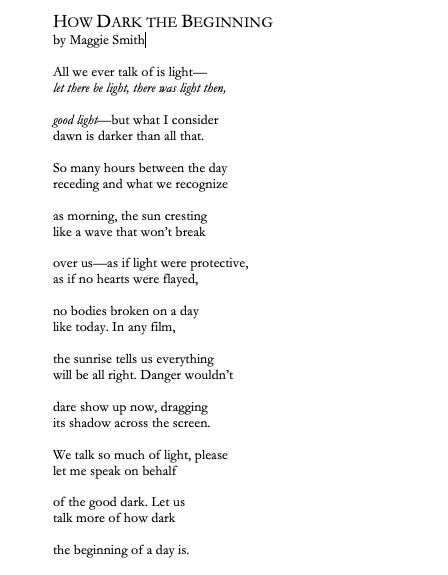Craft Tip
Know Yourself
Today I want to talk about our comfort zones as writers. It’s easy to default to certain craft choices, the way we default to a favorite font.*
Look at a sample of your recent work and ask yourself: What is my comfort zone or “default mode”? Consider line length, stanza or paragraph length, sentence type, even average number of syllables and beats per line. Look for patterns.
I did exactly this, and I saw my comfort zone. I like a mid-length line, about halfway across the page, perhaps four strong beats per line. I tend toward a shorter stanza (couplet or tercet) to allow more white space into the poem. If I could only write in one stanza length for the rest of my life, it would be couplets. I could probably use a support group. (“Hi, I’m Maggie, and I have a problem with couplets.”)
Being self-aware as a writer is a good way to keep yourself from getting into a rut. Because I know that couplets are my “default stanza,” I have to self-interrogate as I draft and especially as I revise, to justify the choice to myself. I’ll experiment with various stanza shapes and lengths, reading the poem aloud and tinkering until I determine the stanza that best serves the poem.
In “How Dark the Beginning,” for example, I knew I wanted the first line to end at the first em dash, which helped set the general line length going forward, though some are slightly shorter or longer. I also knew I wanted a stanza break—white space to make the reader pause—after the first sentence.
Given those two preferences, I could have chosen a couplet (two lines) or a quatrain (four lines) for the first stanza, but quatrains felt too solid and compact on the page. Removing white space between couplets to create quatrains also sped the poem up, and some of the enjambments felt like they were getting lost in those longer stanzas. Ultimately I allowed myself to work in couplets because it felt like the right choice for the poem’s pacing.
My two cents: Don’t get too comfortable. If you’ve noticed some patterns in your own work, it’s up to you to keep pushing yourself in new directions, testing out different possibilities. Make sure the choices you make in a piece of writing are in service of that particular piece.
Happy writing—
Maggie
*Garamond forever, even though the italics are absolute trash.



I love the intimacy of couplets. I've been gravitating to them more lately.
Beautiful --- Also, Garamond = LOVE